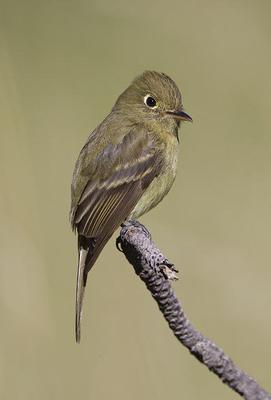CORDILLERAN FLYCATCHER ID-202
Cambridge, Idaho
May 28, 5:53 a.m.
Sunrise at 6:05 a.m.
(I couldn't resist providing the entire six and a half minutes, just a brief selection from what this flycatcher does every dawn.)
A cordilleran flycatcher, no doubt--can't be the sound-alike Pacific-slope flycatcher, as I'm well east of their range along the Pacific. I hear the three different songs, the first four songs being ka-SLWEEP, ka-SLWEEP, pa-TIK, seeet. The ka-SLWEEP is sharply tonal and rising; the pa-TIK is an abrupt, harsh double note; the seeet a single high tonal note. Very distinctive, I try to convince myself, and that I'd know this bird anywhere, unless I'm anywhere near the Pacific, of course, where the sound-alike, look-alike, maybe-even-the-same-species Pacific-slope flycatcher lives.
But there's a small complication, a fourth type of vocalization given at 2:02, and then it occurs sporadically after that (2:28, 2:57, 3:34, 3:43, 3:54, 3:59, 4:16, 5:03, 5:23, 6:25). I wonder what to make of that? This fourth sound is much like the ka-SLWEEP, tonal and rising, but it's a single note, not distinctly double--more like suWEET. Perhaps this is the "position note" that the birds use throughout the day, and it creeps into the singing here when the bird is less motivated to sing. I need to spend more time among these flycatchers, to get to know them better.
Here, compare for yourself the songs of the cordilleran flycatcher (ID-202) with those of the Pacific-slope flycatcher (OR-362). Do they sound like two different species to you?
Background
Warbling vireo, American robin, Nashville warbler, western meadowlark, yellow warbler, MacGillivray's warbler

Photo by Robert Royse
